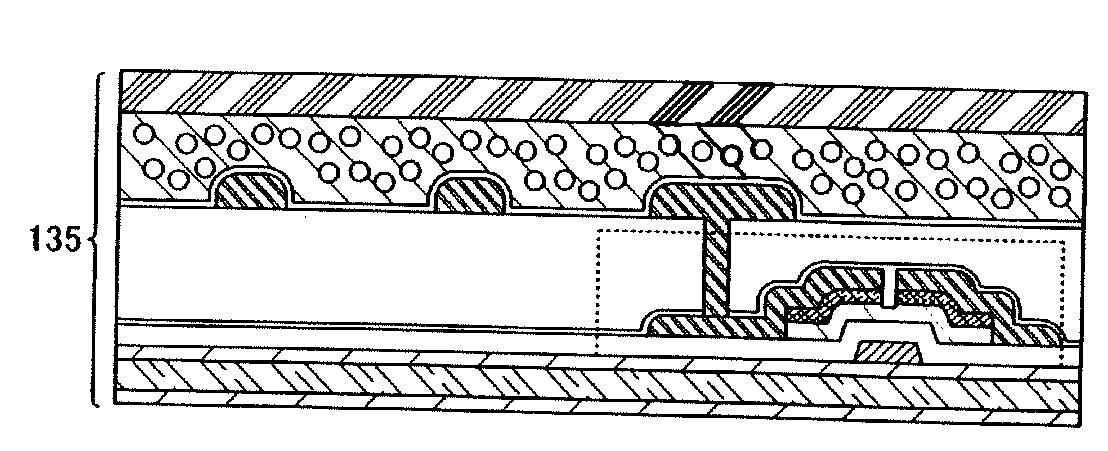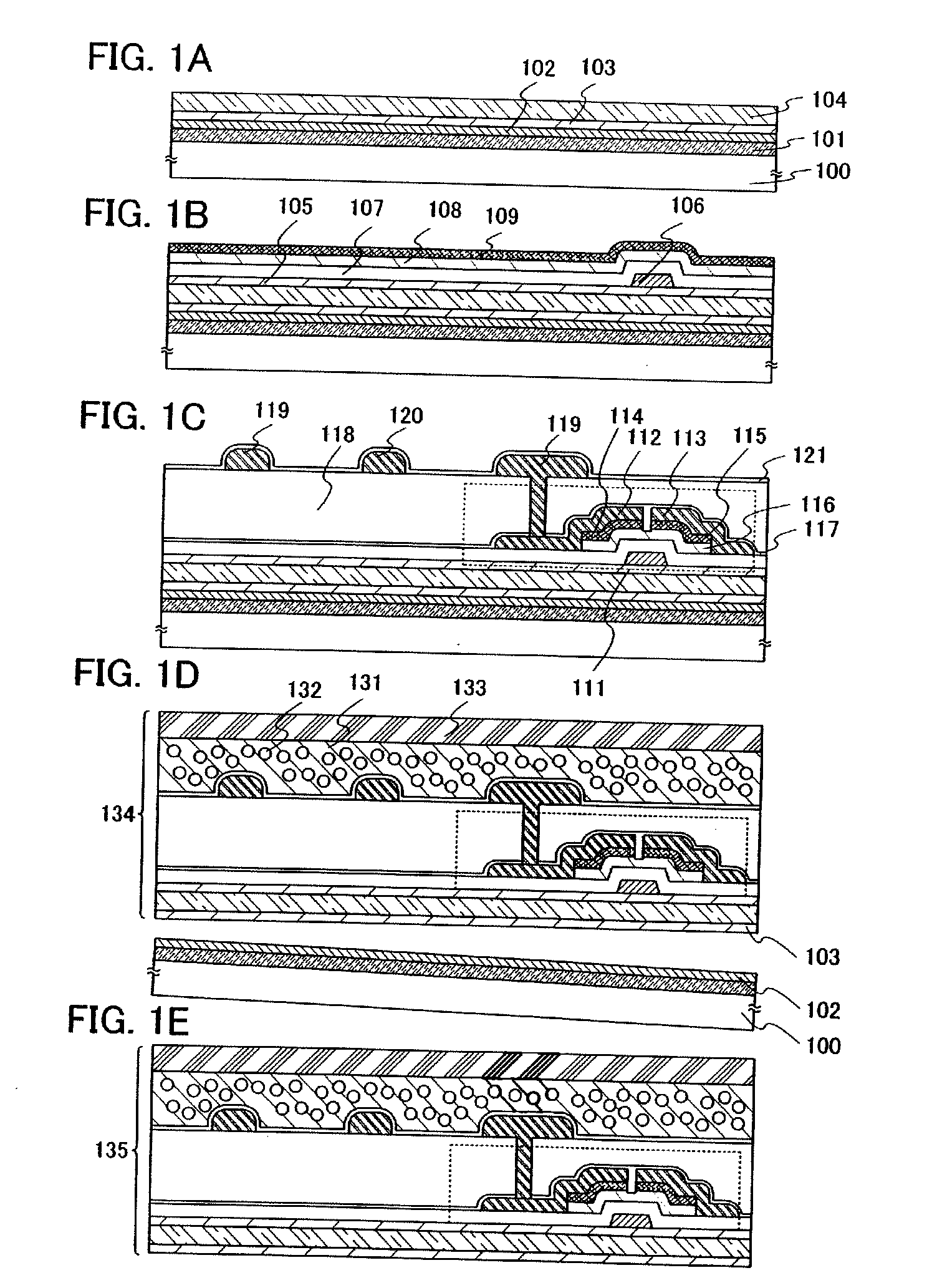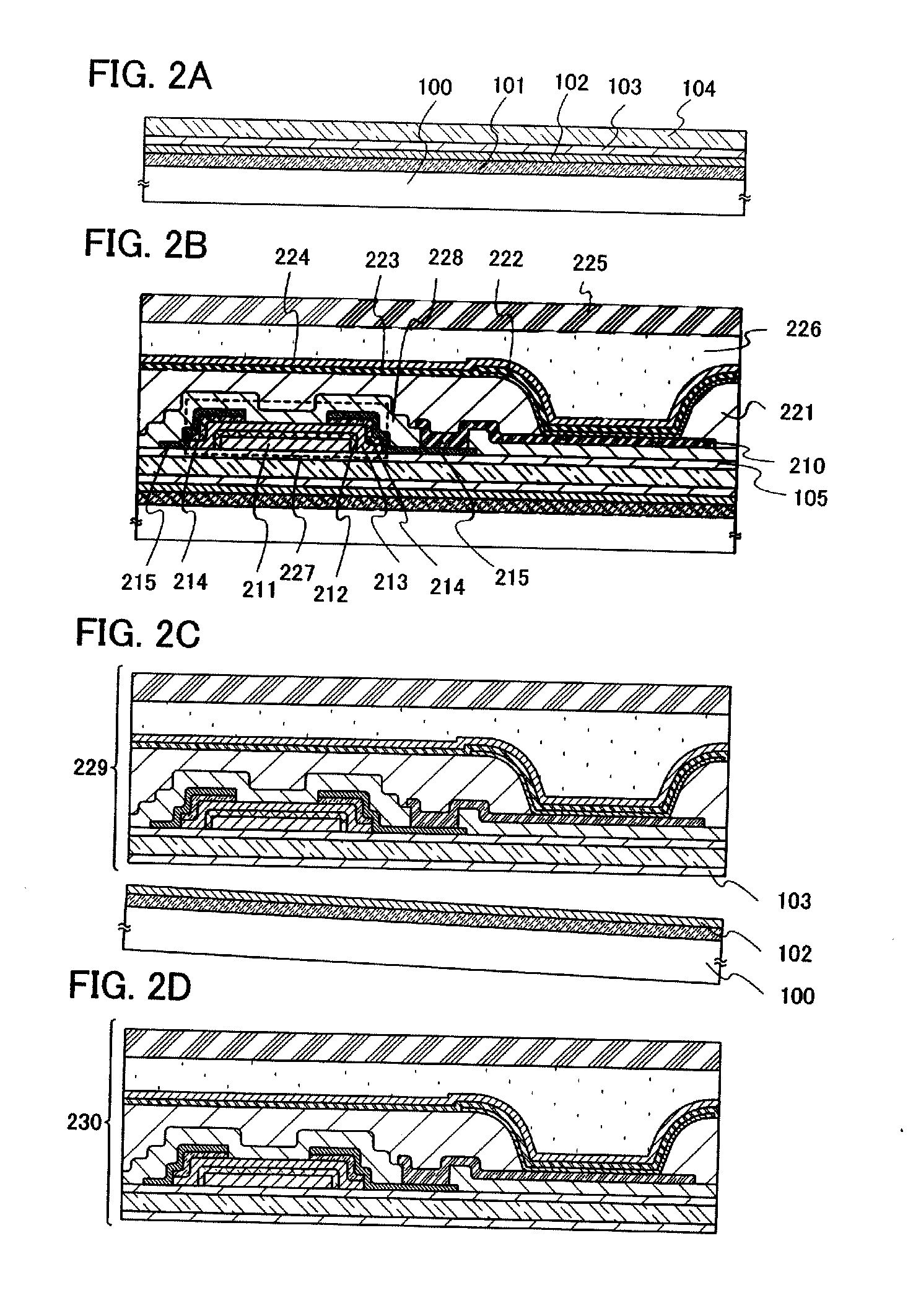Method of manufacturing semiconductor device
a manufacturing method and semiconductor technology, applied in the direction of organic semiconductor devices, solid-state devices, transistors, etc., can solve the problems of plastic film exposure, plastic film deformation, plastic film exposure, etc., and achieve the effect of reducing costs and smooth separation process
- Summary
- Abstract
- Description
- Claims
- Application Information
AI Technical Summary
Benefits of technology
Problems solved by technology
Method used
Image
Examples
embodiment mode 1
[0051]Here, an example in which a liquid crystal display device is fabricated will be described using FIGS. 1A to 1E.
[0052]A molybdenum film 101 is formed over a substrate 100. A glass substrate is used for the substrate 100. Furthermore, for the molybdenum film 101, a molybdenum film with a thickness of from 30 nm to 200 nm obtained by a sputtering method is used. It is to be noted that, because there are cases where the substrate is locked in place in a sputtering method, the film thickness of the molybdenum film in the vicinity of the edges of the substrate easily becomes uneven. For this reason, it is preferable that the edges of the molybdenum film be removed by dry etching.
[0053]Next, a molybdenum oxide film 102 is formed over the molybdenum film 101. The molybdenum oxide film 102 can be formed by an evaporation method. Alternatively, the molybdenum oxide film 102 may be formed in contact with the molybdenum film 101; the surface of the molybdenum film 101 may be oxidized, and...
embodiment mode 2
[0076]Here, an example in which an active matrix light-emitting device that uses organic thin film transistors is fabricated will be described using FIGS. 2A to 2D.
[0077]As in Embodiment Mode 1, the molybdenum film 101 is formed over the substrate 100, the molybdenum oxide film 102 is formed over the molybdenum film 101, the nonmetal inorganic film 103 is formed over the molybdenum oxide film 102, and the organic compound film 104 is formed over the nonmetal inorganic film 103. A cross-sectional process diagram of what is obtained after processes up to this stage have been completed is shown in FIG. 2A.
[0078]Next, the inorganic insulating film 105 may be formed over the organic compound film 104. Subsequently, a conductive layer 211 that is to be used as a gate electrode is formed over the organic compound film 104 or over the inorganic insulating film 105. For a material used in the conductive layer 211, a metal that is made to be insulative by either nitridation or oxidation or by...
embodiment mode 3
[0105]Here, an example in which a passive matrix light-emitting device is fabricated over a flexible substrate will be described using FIGS. 5A to 5C, FIG. 6, FIG. 7, FIGS. 8A and 8B, and FIG. 9.
[0106]A passive matrix (simple matrix) light-emitting device has a structure in which a plurality of anodes is provided in parallel stripe form (band form) and a plurality of cathodes is provided in parallel stripe form so that the plurality of anodes and the plurality of cathodes are perpendicular to each other and a structure in which a light-emitting layer or a fluorescent layer is inserted at an intersection of each of the plurality of anodes and plurality of cathodes. Consequently, a pixel located at an intersection of a selected anode (an anode to which a voltage is applied) and a selected cathode comes to be lit up.
[0107]FIG. 5A is a diagram illustrating a top view of a pixel portion before a flexible substrate is attached to a second electrode 516 of a light-emitting element. FIG. 5B...
PUM
| Property | Measurement | Unit |
|---|---|---|
| temperature | aaaaa | aaaaa |
| temperature | aaaaa | aaaaa |
| thickness | aaaaa | aaaaa |
Abstract
Description
Claims
Application Information
 Login to View More
Login to View More - R&D
- Intellectual Property
- Life Sciences
- Materials
- Tech Scout
- Unparalleled Data Quality
- Higher Quality Content
- 60% Fewer Hallucinations
Browse by: Latest US Patents, China's latest patents, Technical Efficacy Thesaurus, Application Domain, Technology Topic, Popular Technical Reports.
© 2025 PatSnap. All rights reserved.Legal|Privacy policy|Modern Slavery Act Transparency Statement|Sitemap|About US| Contact US: help@patsnap.com



